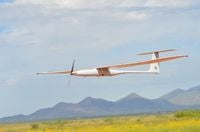In a Senate Armed Services Committee hearing held on September 11, 2025, General Christopher J. Mahoney, USMC, found himself in the hot seat as lawmakers pressed him about the future of military technology and ethical leadership. The hearing, which focused on Mahoney’s nomination for reappointment as a four-star general and Vice Chairman of the Joint Chiefs of Staff, quickly zeroed in on a matter that has become increasingly urgent: the rapid development and deployment of autonomous drone technology, especially in response to mounting tensions on NATO’s eastern flank.
Recent months have seen a worrying uptick in Russian drone incursions into Polish airspace, according to reporting from the Senate hearing. This escalation has prompted a flurry of debate in Washington over the Pentagon’s readiness to counter such threats. Senators at the hearing made it clear that the stakes are high, emphasizing what they called the need for “attritable autonomy” — essentially, the capability to deploy large numbers of expendable, intelligent drones in contested environments without breaking the bank or risking human lives unnecessarily.
General Mahoney did not shy away from the challenges at hand. He acknowledged the complexity of integrating artificial intelligence into drone systems, noting that these technologies are expected to do much more than just fly from point A to point B. They must enhance communication, identify targets accurately, and make split-second decisions in the fog of war. "Accelerating investments in this technology is crucial, but we also have to ensure that every dollar spent — from procurement to maintenance — is fully understood and accounted for," Mahoney told the committee.
Senator Reid, one of the more vocal members of the committee, took a moment to praise Mahoney’s reputation for candor. "Your commitment to honest military assessments, even when they might conflict with the views of your superiors, is commendable," Reid said. In response, Mahoney reaffirmed his dedication to upholding the U.S. Constitution and the ethical standards expected of military leaders. He emphasized the importance of fostering a culture within the Joint Force that encourages officers to voice their opinions, especially when the situation is murky and clarity is desperately needed. "It’s my duty to provide honest assessments, regardless of external pressures," Mahoney stated, underscoring his long-standing oath and the ethical responsibilities that come with high command.
But the hearing was not just about leadership philosophies and ethics — it was also about the nuts and bolts of military innovation. The conversation took on added urgency with the announcement, also on September 11, that the Department of Defense had officially added Kraus Hamdani Aerospace’s K1000ULE uncrewed aerial system (UAS) to its Blue UAS Cleared List and Blue UAS Select List. According to the Department of Defense, this marks the K1000ULE as a secure, NDAA-compliant platform that is ready for immediate procurement. The drone had been independently assessed with zero cyber vulnerabilities and carries an Authority to Operate, making it a standout in a crowded field of next-generation aerial systems.
The K1000ULE isn’t just another drone. As reported by the company and confirmed by the Pentagon, it is the longest-endurance and longest-range aircraft in its category. In October 2024, Kraus Hamdani Aerospace secured a $20-million contract to field the K1000ULE with the US Army Pacific 1st Multi-Domain Task Force and Joint Special Operations Command — a clear signal that the military is betting big on this technology. "This achievement validates the aircraft and the complete autonomy and software stack behind it," said Stefan Kraus, co-founder and CTO of Kraus Hamdani Aerospace. He added, "It is secure, interoperable, and field-proven with the Army, Navy, MARSOC, and allied forces. We are ready to meet the DOD’s call for scalable operational autonomy today."
What sets the K1000ULE apart? For starters, it features a minimal logistical footprint and requires no fuel, running entirely on a fully electric propulsion system. It can go from box to flight in about 10 minutes — a critical advantage when time is of the essence. The drone is designed for sustained operations, boasting a multi-payload capacity, runway independence, and a silent acoustic signature that makes it hard to spot and even harder to hear. Its artificial intelligence-driven mission capabilities enable it to operate across multiple domains, addressing complex operational challenges that would have been unthinkable just a few years ago.
One of its most innovative features is its ability to function as an autonomous communications gateway. The K1000ULE can extend and bridge voice and data waveforms, as well as Tactical Data Links, making it a linchpin in the Pentagon’s efforts to achieve seamless Joint All-Domain Command and Control (JADC2) and Next Generation Command and Control (NGC2). Through its proprietary AI engine, KHAi, the drone delivers real-time decision support — a capability that military planners say is essential for operating in contested environments where traditional communication infrastructure may be degraded or compromised.
These technological leaps are not just about keeping up with adversaries like Russia. They represent a fundamental shift in how the United States thinks about warfare, deterrence, and the ethical use of emerging technologies. The Senate hearing made it clear that while hardware and software are critical, so too are the people at the helm. Mahoney’s testimony highlighted the delicate balance between embracing innovation and maintaining the ethical guardrails that have long defined the U.S. military’s approach to leadership and accountability.
The committee’s forthcoming decision on Mahoney’s nomination will have far-reaching implications. If confirmed, Mahoney will play a pivotal role in steering the Joint Chiefs — and by extension, the entire U.S. military — through an era defined by rapid technological change and evolving geopolitical threats. The integration of platforms like the K1000ULE into active service is just the beginning. As the Pentagon ramps up investments in scalable, autonomous systems, questions about oversight, cost, and the ethical dimensions of AI-driven warfare will only become more pressing.
For now, the message from Capitol Hill is clear: technological innovation and ethical leadership must go hand in hand. As the U.S. military races to keep pace with rivals and redefine the battlefield of the future, the decisions made in hearings like this one will shape not just the tools of war, but the very principles that guide how and why they are used.




